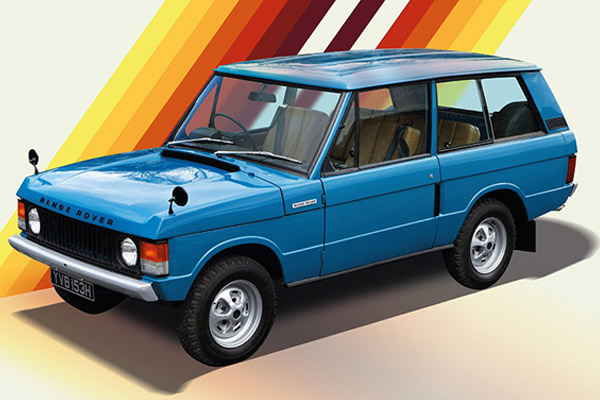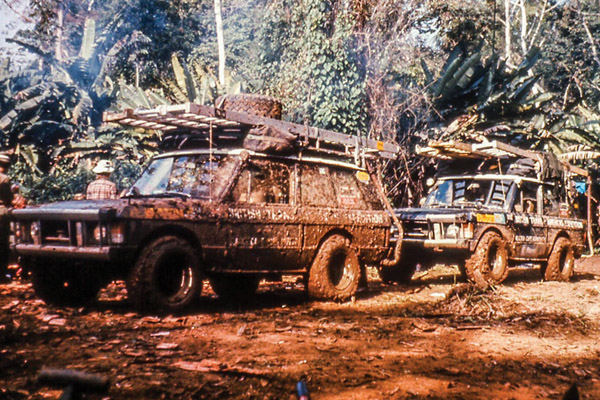28 April 1015
The original luxury SUV, Land Rover’s Range Rover turns 55 this year, and has evolved significantly over the decades, as the rest of the industry sought to catch up.
Revolutionary idea

The Range Rover was an SUV before the term had even been invented… and by a matter of decades. In 1970, the 4x4 market was growing, and Land Rover was at the heart of it around the world. But it was undeniably utilitarian, and the idea for a more civilised off-roader was planned by Charles Spencer ‘Spen’ King, aiming to offer the on-road manners of a Rover with the ‘go-anywhere’ ability of a Land Rover.
Development began in the late Sixties, and the first model launched in mid-1970. Featuring two-door shooting brake styling on an off-road platform, the Range Rover arrived with a lightweight aluminium V8, all-round disc brakes, and of course, all-wheel drive.
A model of firsts

It made an instant impression, and was even the first vehicle to go on display in the Louvre. It continued what became a series of firsts by becoming the first vehicle to cross the length of the Americas, including the Darian Gap – an 18,000 mile expedition with the British Army in 1972. Its off-road credentials were proven further a couple of years later when a crossing of the Sahara from west to east in 100 days, and in 1977 a modifies Range Rover won the 4x4 class in the London-Sydney Marathon.

A specially modified Range Rover won the inaugural Paris-Dakar in 1979, and that was all with the three-door model. The first four-door Range Rover arrived in 1981 – retaining the split tailgate that remains a Range Rover signature design element. Other key styling features included a clamshell bonnet, vents in the front wings, and ‘floating’ roof – all of which have continued through the generations.
The next levels
It wasn’t until 1994 that the second-generation model arrived, featuring new electronic air suspension, a semi-monocoque body, and long-wheel base chassis. The first-generation Range Rover continued production for an additional two years before bowing out, and by then the newer P38a version had started investigating high-end models. This continued in 1999 with a limited-edition model inspired by Lord Linley, with only 10 units produced, costing £100,000 each.
2001 saw the third-generation L322 Range Rover arrive, which also saw the Range Rover Sport launched four years later. The combination of models – even though the Sport was based on the Discovery platform of the time – saw Range Rover cement its status as the leading luxury 4x4 on the market, despite increased competition from the likes of BMW, Mercedes-Benz, and Audi. It would still be another 15-20 years or so before rivals from Bentley, Rolls-Royce, and Maybach were around.

The Range Rover sub-brand expanded further in 2010 with the launch of the entry-level Evoque, as Land Rover started to divide its model lines into Land Rover, Discovery, and Range Rover sections. It wasn’t until 2012 that the fourth-generation Range Rover arrived, as the first all-aluminium SUV, before the second-generation Range Rover Sport was launched in 2013.
The spirit of adventure remained in these new models, with the Sport completing a new hill climb record on Pikes Peak for the fastest production SUV, and the same year – 2013 – it recorded the fastest time to drive 800km across the Empty Quarter desert, while hybrid prototypes were tested by covering the old Silk Trail – almost 10,000 miles from Solihull to Mumbai.
The fourth Range Rover model – Velar – was introduced in 2017, rounding out the range, with the first electrified model – the Range Rover P400e PHEV – arriving the same year. And now we have the fifth-generation Range Rover, launched in 2022, which continues many of the original’s design ideas, but competes with the most luxurious cars in the world.

COMMENT